In the south of Spain, in the heart of the Andalusia region, you’ll find the ancient city of Córdoba. Dating back more than 2,000 years, Córdoba has a rich history thanks to the confluence of cultures and religions that made it home. That influence can still be seen and felt today.
Founded by Roman general Claudius Marcellus in the second century B.C., the city flourished under his rule. Then came the Moors in 711, who made Córdoba the new capital of Al-Andalus, hence the modern name of the region, and added hospitals and libraries not to mention 300 mosques to its cityscape. Until the Christian Reconquest, the substantial Jewish population thrived in Córdoba as well. This mesh of cultures and traditions make Córdoba a city worth visiting. It’s the only Spanish city to have four UNESCO World Heritage Sites!
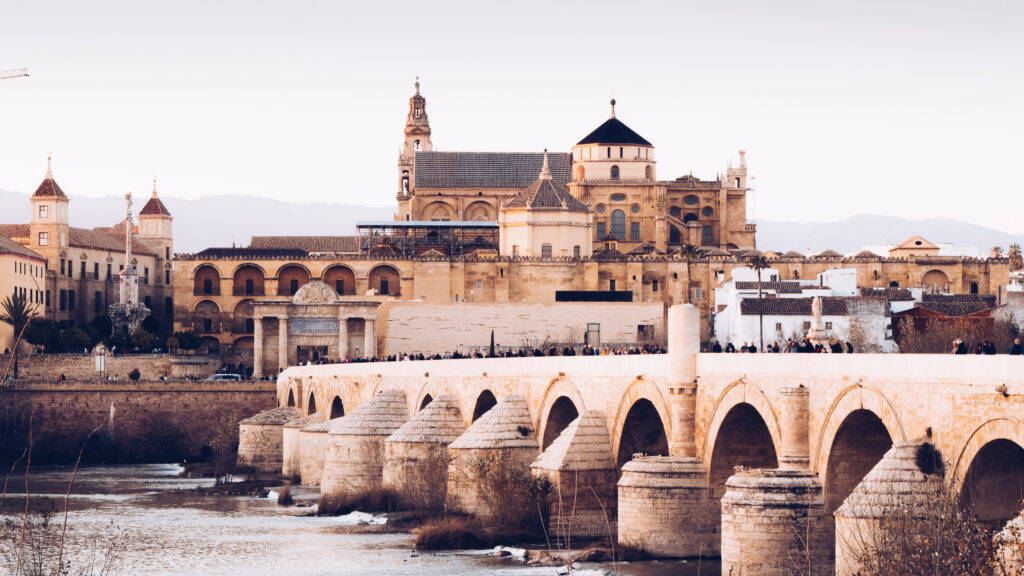
Although historic sites abound, today, Córdoba is a thriving, modern metropolis. Just a quick journey from Seville and Granada, Córdoba is the perfect addition to an Andalusian itinerary. Here are our top things to see and do in Córdoba.
Eat
Like many places in Spain, you can expect to find some great tapas joints in Córdoba, but there are a couple of dishes that are unique to the city and region. Flamenquín is a local delicacy made from slices of serrano ham that’s wrapped around a pork loin and then breaded and deep-fried—think a rolled-up schnitzel with extra ham and you get the idea. To try it for yourself, head to Café Bar Hermanos Bonillo, a simple restaurant near the Jardines Elena Moyano. Hermanos Bonillo’s version is extra long so you might need to wash it down with an Estrella Galicia or get a couple of friends to share it—but don’t say we didn’t warn you!
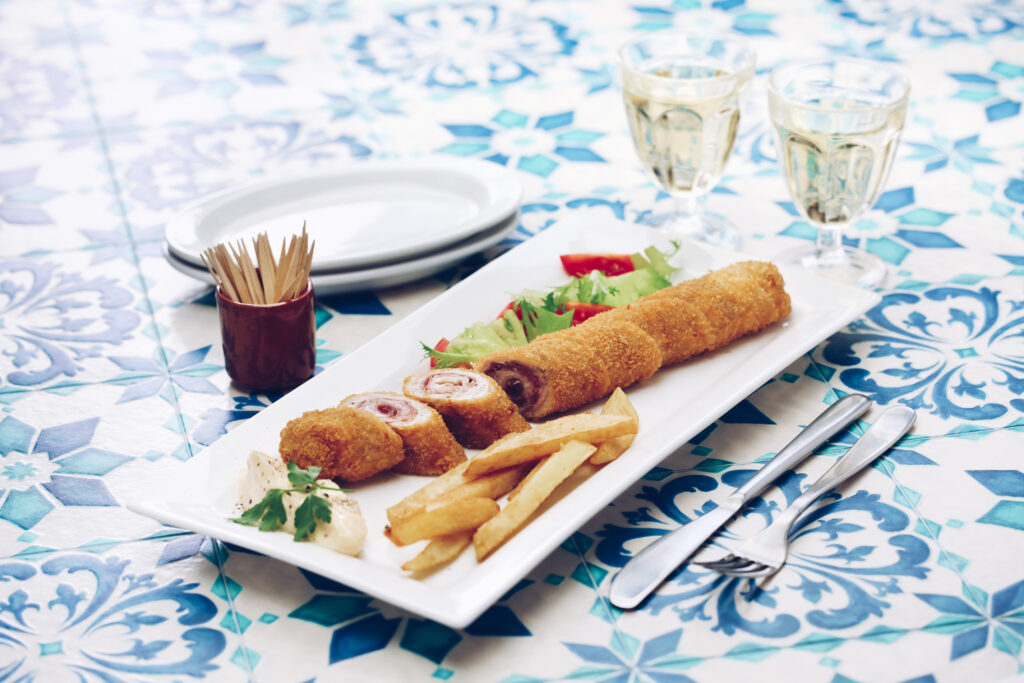
Another specialty of the area is salmorejo, a cold soup made from tomatoes, bread, garlic and olive oil, and then garnished with serrano ham and eggs. Although made from simple ingredients, this soup is full of flavor and is a popular choice during the high temperatures of spring and summer.
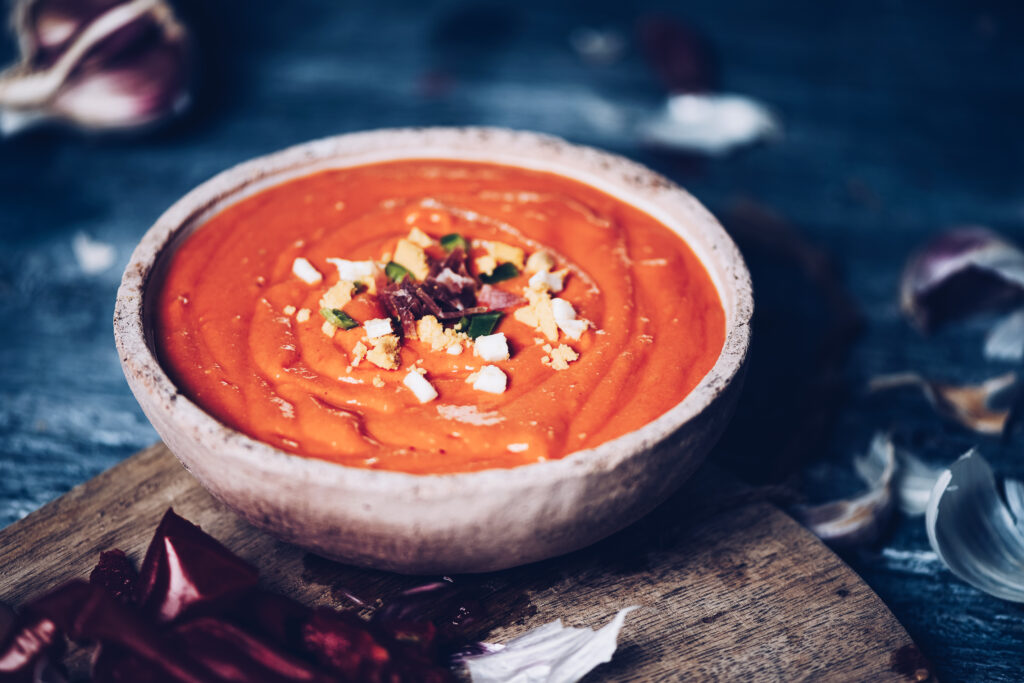
Head to Taberna El Abanico, an eatery that serves the smoothest salmorejo in Córdoba. This modern restaurant, situated adjacent to the Great Mosque, boasts a fresh decor with modern flourishes such as avant-garde floral decorations and fan displays. Taberna El Abanico champions Andalusian produce and wine so the salmorejo is about as authentic as you can get.
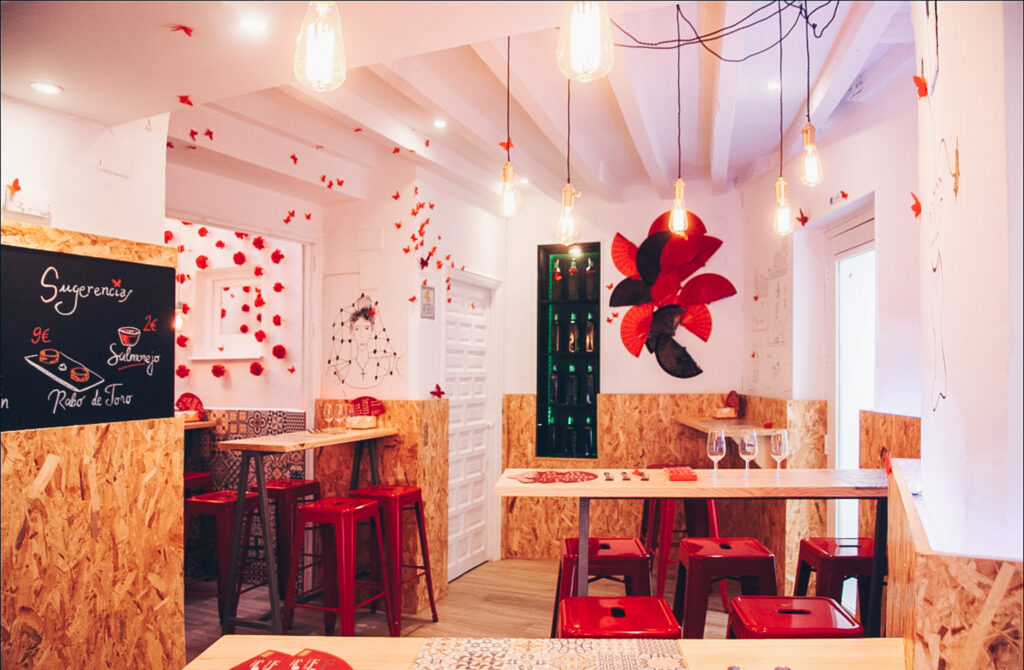
Alternatively, visit Mercado Victoria, the first gastronomic market in Andalusia. The covered space dates back to the 19th century as a meeting place and food market. Today, it offers more than 20 food stalls and the vibe is decidedly buzzy. Enjoy everything from salmorejo to other Andalusian delights such as grilled sardines and shrimp tortillas. If the weather is particularly sunny—and you’re in Andalusia so why wouldn’t it be?—grab your lunch and head to the outdoor seating area covered with vines and fans. It’s the ideal spot on a hot summer day to stay cool.

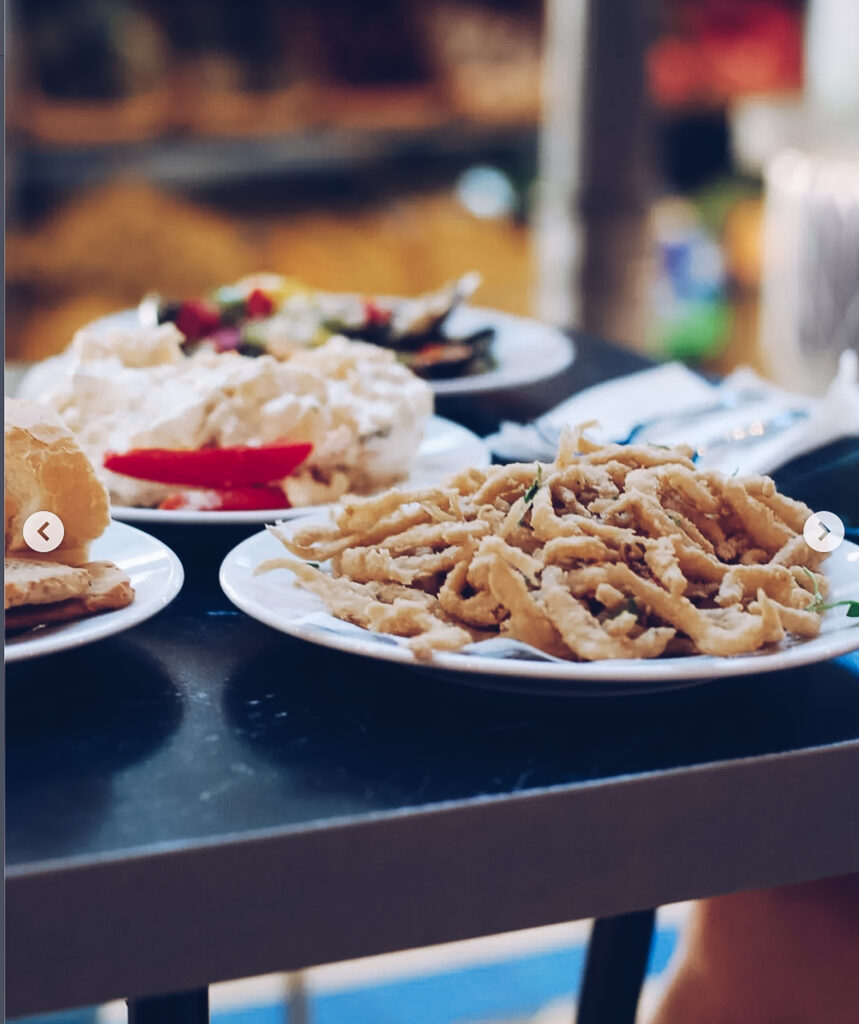
Looking for something sweet? Then you’ve got to try pastel cordobés, which, as the name implies, are unique to the city of Córdoba. This special pastry boasts layers of puff pastry, and is filled with sweetened spaghetti squash—yup, you read that right—but trust us, it’s delicious! Head to Roldan, a popular patisserie found throughout Córdoba, to try it.
Play

Córdoba is on the map for its infamous mosque, an impressive architectural feat that sits in the heart of the city and is one of the top things to see in Córdoba. The Great Mosque of Córdoba (known locally as the Mezquita) dates back to Roman times. Originally a church, it was built more than 1,500 years ago to honor the Roman god, Janus. Although there’s not much left of the original church, you can still see the 850 columns that support the main structure of the mosque in its current form.
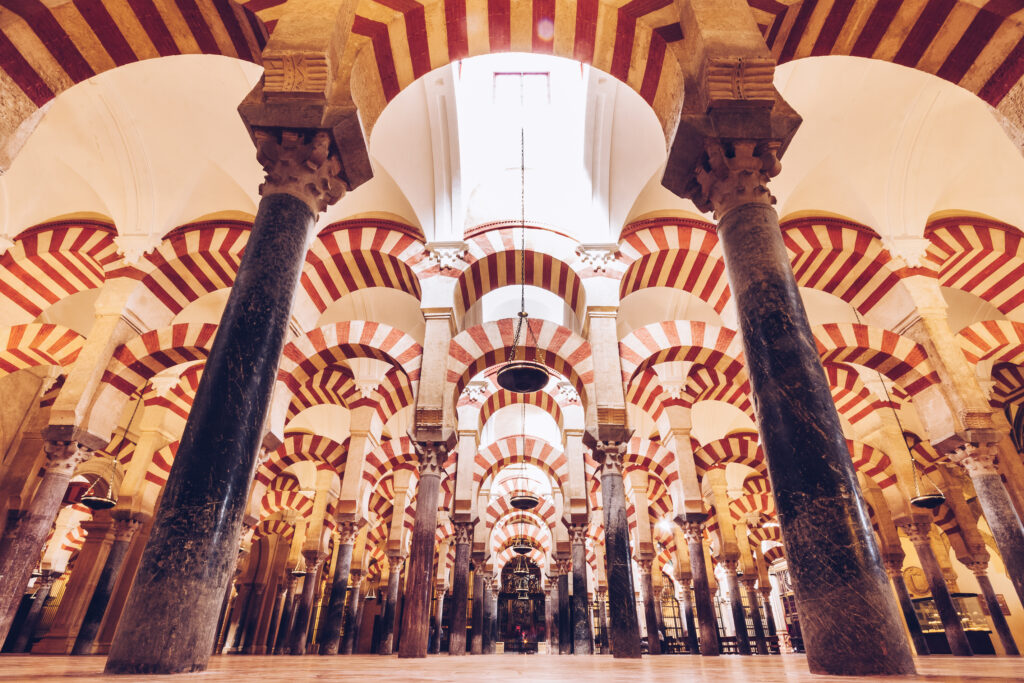
In 784, Emir Abd ar-Rahman I, the Muslim ruler of Córdoba, decided to convert the church into a mosque in the Umayyad style. Using the existing Roman columns, the mosque soon became one of the largest buildings in the Islamic world and was a gathering place for Muslim worshippers for the next 300 years. However, it wasn’t to last. With the beginnings of the Christian Reconquest in 1236, the mosque was repurposed, and Ferdinand III and subsequent Christian rulers of Córdoba implemented Gothic, Renaissance and Baroque flourishes over the years when converting it into a Catholic cathedral.
Córdoba’s mosque is now often referred to as a mosque-cathedral to acknowledge the rich history of the impressive building. The Great Mosque is open year-round and welcomes visitors into its grand interior but asks that everyone be respectful to those who still use the Great Mosque as a place of worship.
The Patio de Los Naranjos (patio of oranges) sits at the entrance of the Great Mosque. It is an impressive square that has changed little since it was built alongside the Mezquita. In the courtyard, you’ll find relaxing water fountains and dozens of orange trees, whose aroma sweetens the air when in bloom. Along one side of the square, you’ll find several ornate horseshoe archways that take you to the mosque’s entrance.

Situated around the Great Mosque is Córdoba’s Old Town, which is one of the largest in Europe and has UNESCO World Heritage Site status. Wander through the higgledy-piggledy streets that were purposely built for disorder to create shadows so that residents would stay cool on hot days. Get lost as you explore the iconic white buildings and cobblestone streets. Make sure to find the idyllic Calleja de Las Flores, a picturesque, narrow alley, where the walls are adorned with carnations.
Throughout Córdoba, you’ll see influences from its Roman, Moorish and Christian heritage, but there was also a large Jewish community that lived in the city between the 10th and 15th centuries. Discover more about their history in Córdoba’s beautifully preserved Jewish Quarter that sits within the historic center.
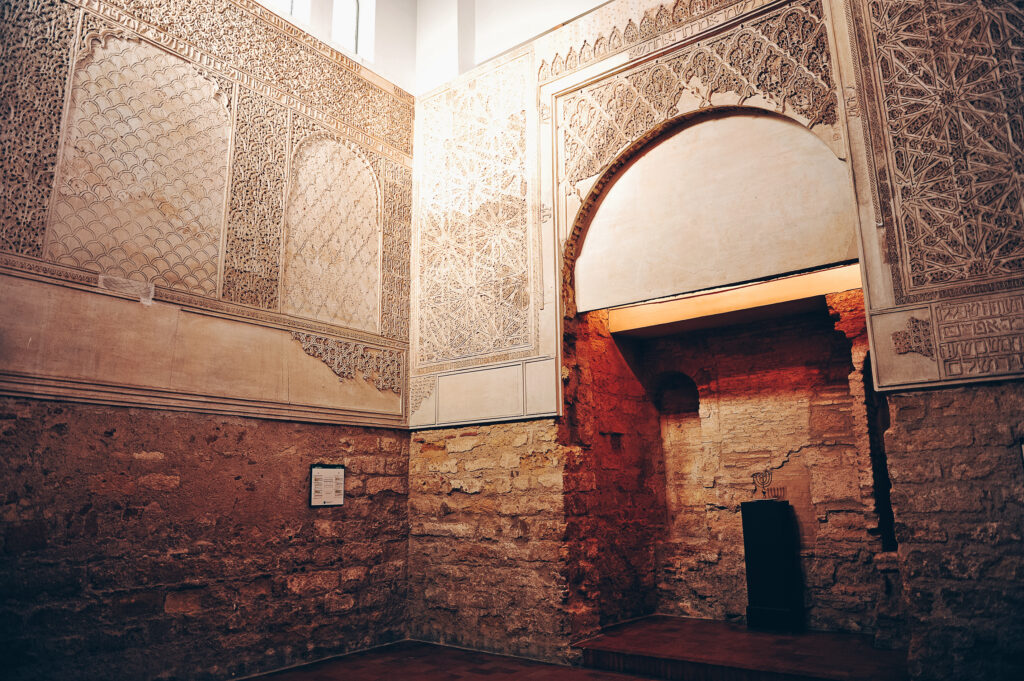
Here you’ll find the Córdoba Synagogue, which is one of Spain’s best preserved medieval buildings—it’s also one of the few synagogues left in the country. The ornate stonework, with Hebrew inscriptions covering the walls, is a sight to behold. After Spain expelled the Jewish community, the Christians used the building as a hospital, a hermitage, and then a school. It wasn’t until the 19th century that Spain gave the synagogue national monument status.
If you want to venture out of the Old Town into other parts of Córdoba, you’ll find plenty of relics to keep you occupied. To learn more about the Roman influence on the city, head to Córdoba’s town hall and you’ll be confronted with the magnificent ruins of the Roman Temple. Although not fully intact, what’s left of the temple suggests it would’ve been of a very large scale and a place to worship the Roman gods. Today, you can see remnants of its foundations and altar, and several of the column shafts.
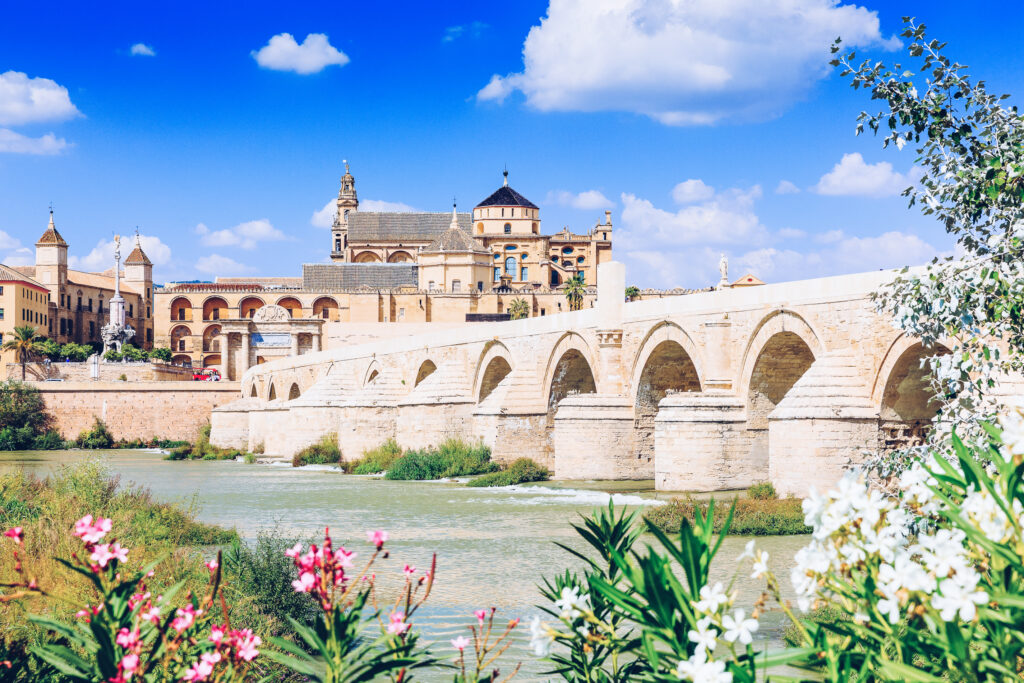
If you want to see more Roman artifacts, cross the Roman Bridge. This impressive engineering feat overlooks the Guadalquivir river and leads to the Grand Mosque. Originally built by the Romans under the watchful eye of emperor Augustus, you can still see the 16 original foundations. However, like most things in Córdoba, the bridge was changed by the Moors to the structure we see today. The bridge created an important barrier to the city and protected locals from attacks. Admire the statue of San Rafael, the patron saint of the city, at the center. As you cross the bridge, you’ll often see Córdobans praying at the statue or leaving lit candles to honor him.
On the other side of the bridge is the Calahorra Tower. Originally on the site of an Arabian castle, Henry II of Trastamara built the tower so he could create a defensive fortification to protect the city against attacks from his own brother, Peter I (otherwise known as Peter the Cruel)! If you like heights, climb the narrow, spiral staircase to the top of the tower for some of the best views of Córdoba.
Inside the Tower lies the Museo Vivo de Al-Andalus (Al-Andalus Living Museum) where you can discover more about Córdoba’s rich history. The museum takes you back in time to the Middle Ages. Here, you can discover for yourself how the three religions that dominated the city lived together. There are eight rooms in the museum and as you travel through them, you’ll discover artifacts such as tools, paintings, and tapestries from the time.
However, Córdoba isn’t just old buildings, it’s also a thriving Spanish city full of modern life. Like the rest of the region of Andalusia, Córdoba loves its flamenco. Intertwined with the region’s history, it’s said that flamenco dates back to the ninth century, when the Roma people migrated to the region from India. Over time, other influences from Christian, Moorish, and Jewish cultures affected the dance and made it to what it is today. In 2010, UNESCO gave the dance, Masterpieces of Oral and Intangible Heritage of Humanity status to acknowledge flamencos’ cultural importance to the region and to Spain.
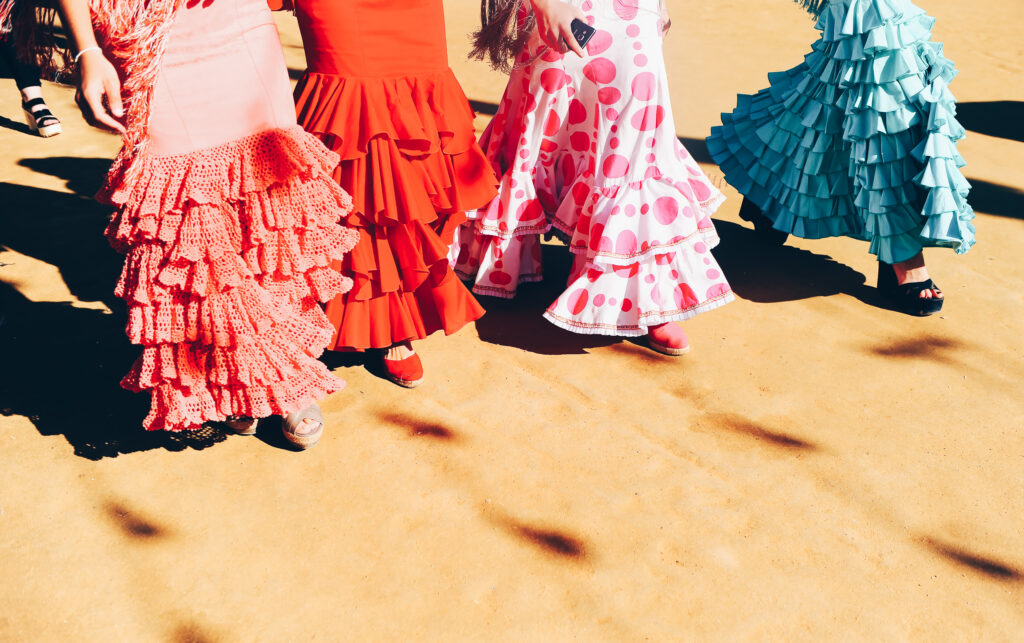
Being a core part of Andalusian culture, expect to see flamenco bars and festivals across the region but particularly in Córdoba. Throughout the year, discover the many flamenco festivals that take place in the city. One of the biggest is Noche Blanca del Flamenco (The White Nights of Flamenco), which takes place in June. For two nights every year, Córdoba becomes a sea of budding flamenco fans wearing traditional outfits such as polka dot Gitana dresses. The festival sets up stages at the city’s most iconic locations, and throughout the two nights, some of the biggest flamenco stars, globally and locally, perform for adoring crowds.
If you can’t make it to Córdoba during June, there are plenty of bars that host flamenco nights throughout the year. Tablao El Cardenal is one of the most popular spots in Córdoba to enjoy the art form. Open for 25 years, the bar puts on a show for revelers every night. The two-hour show takes place on the grounds of the old archbishop’s palace, in the shadows of the Great Mosque, and treats guests to a spectacle from five of the city’s award-winning dancers.
If you’re in the city during May, you’re in for a floral extravaganza. For the first two weeks of every year, residents of Córdoba open up their private courtyards—which are said to be the most beautiful in Spain—for the Fiesta of the Patios (Córdoba Patios Festival). For 12 days, you can take a peek into these classic Spanish courtyards and admire the colorful array of flowers that hang from the walls and spill over the balconies. Each year, you can take different routes to discover the myriad courtyards.
Stay
Soho Boutique Córdoba
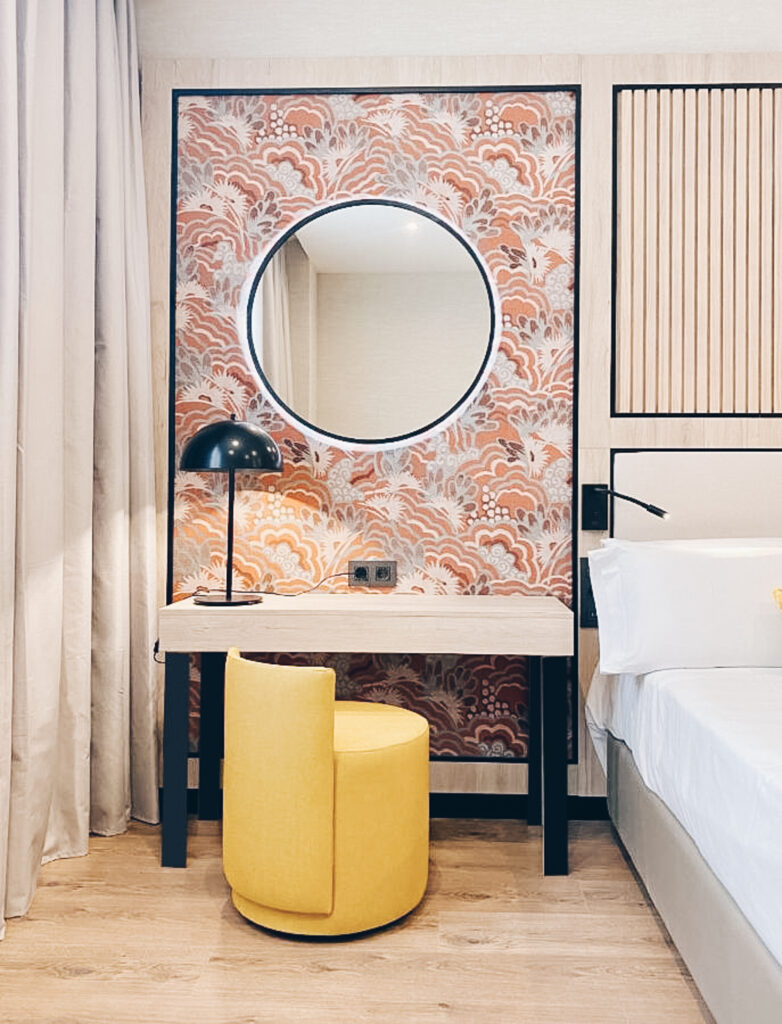
Soho Boutique offers a modern respite in this ancient city. This chic hotel is in the heart of Córdoba and is just a stone’s throw from the city’s biggest attractions, including the Great Mosque and the Roman Temple. Inside the hotel, expect mod-cons with hints of the past. All rooms have contemporary designs with accent walls and instagrammable furniture. Dip your foot in the rooftop pool or swim a lap or two to beat the summer heat.

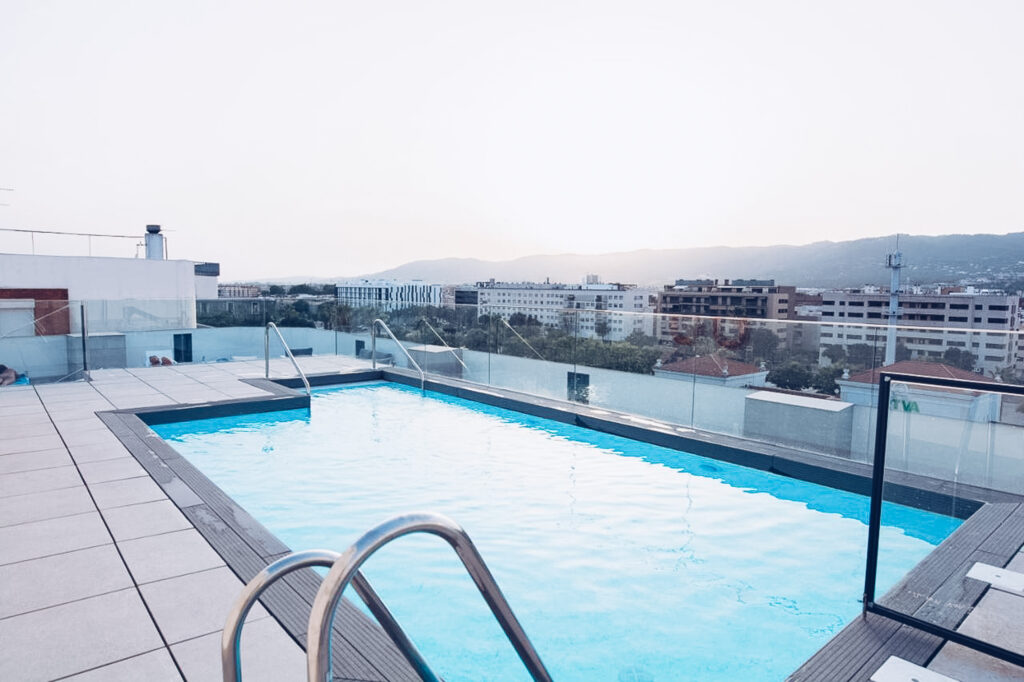
Eurostars Patios de Córdoba
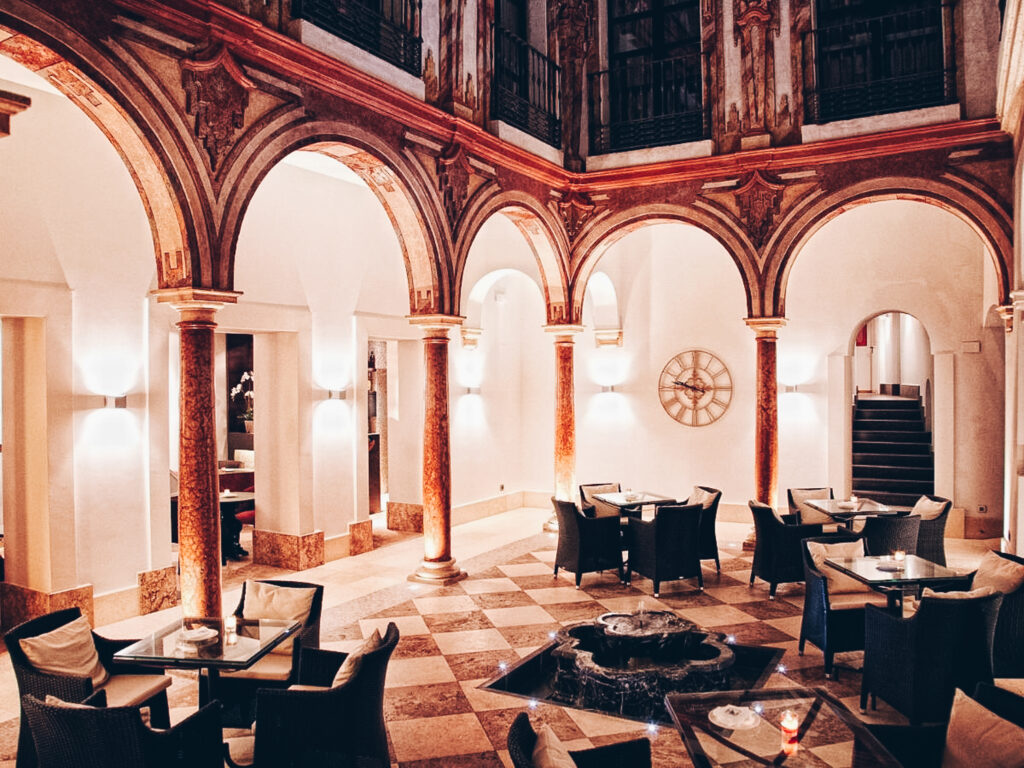
One of the few Eurostars in Córdoba, Patios de Córdoba, is a fusion of modern Spanish design and the ancient influences that shape the city. You can see this best in the hotel’s impressive foyer, which comprises three interior courtyards, in a typical Andalusian style, with arches and tiled floors. Rooms are simple in design with accents that hark back to the area’s history, so expect pattern cushions, stone accented walls and ornamental trinkets. From the roof terrace, you can enjoy views of the Mosque’s tower.

